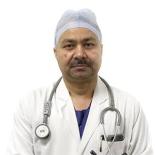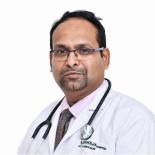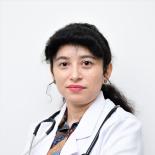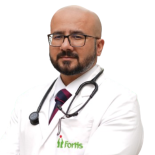About Emergency Medicine
Emergency medicine is one of the branches of medical science primarily on diagnosing and treating acute medical disorders. An acute medical disorder is a sudden, serious, and short-term medical condition that can occur in any part of your body. It entails making decisions rapidly and acting to stabilise patients in potentially fatal circumstances. It commonly deals with traumas (injuries), cardiac crises (heart attacks), brain attacks (stroke), breathing difficulty, sudden unresponsiveness, unstable vital parameters (like low blood pressure) poisoning, and acute illnesses in their fast-paced work environments at hospitals and urgent care facilities. Emergency physicians are well-trained to provide immediate lifesaving care during life-threatening conditions. This article covers information on emergency medicine, emergency physicians, their roles and responsibilities, and criteria to follow while transferring emergency patients and how to manage circumstances to help them.
What is emergency medicine?
Emergency medicine is a medical speciality that mainly deals with diagnosing and treating acute illnesses or injuries requiring immediate medical attention. It focuses on treating life-threatening and critical conditions, like polytrauma (severe injuries), cardiac emergencies (heart attacks, cardiac arrest), respiratory emergencies (asthma attacks, pneumonia and respiratory failure), neurological emergencies (seizures, strokes, and head injuries), acute infections and shock, gastrointestinal Emergencies, paediatric emergencies (in children), liver and kidney related Emergencies, obstetric emergencies and toxicological Emergencies. Emergency medicine entails the immediate evaluation and management of acute illness or sudden injuries. It is a practise-based field that requires instant skills. It includes areas of disaster management and planning, man-made and natural events, toxicology, and critical care. Emergency medicine has subspecialisations to treat different critical conditions.
Wilderness medicine
- Paediatric emergency medicine: It deals with the emergency medical care of children under the age of 14 and infants.
- Anaesthesiology emergency medicine: It mainly deals with the emergency care of patients with a critical illness caused during road accidents or multiple organ failures and who require continued care over a period of time.
- Pain emergency medicine: It deals with treating critical pains in case of cancer or trauma.
- Medical toxicology: It deals with the evaluation, treatment, and prevention of injuries caused by toxic and hazardous chemicals or drugs. Medical toxicology takes care of drug abuse, acute drug poisoning, addiction or withdrawal, venomous bites, chemicals, hazardous materials, etc.
- Neuroocritical care: It provides treatment and care to patients with neurological disorders.
Sports emergency medicine: It provides emergency care for sports-related injuries and traumas.
Emergency physician
Emergency physicians are the doctors who work in the emergency department and provide immediate lifesaving care for emergency medical conditions. Their primary target is to stabilise, diagnose and treat patients with acute medical, surgical and traumatic Emergencies. They evaluate patient, stabilise them, diagnose the underlying cause and make the treatment plan of patient before handing over to other specialities. The role and responsibilities of emergency physicians include:
- Rapid clinical evaluation of patient and stabilising them
- Diagnosing the underlying cause which brought patient to ED
- Preparing the management plan of patient and initiating the treatment
- Use advanced technologies in in patient evaluation and diagnosis to harness good outcome
- Effective use of point of care testing (POCT) AND Point of care Ultrasound (POCUS) in patient evaluation and resuscitation.
Stabilisation of patients is done as quickly as possible with the available resources through examinations to prevent any casualty or death. They make instant decisions on the evaluation and management of every patient. They work simultaneously with different departments and review all the lab reports at every step of treatment. It requires great teamwork and effort from each and every person assigned to the emergency department, who works along with the emergency physician. They possess a range of skills, such as the ability to work effectively in high-pressure environments, the ability to prioritise tasks and manage time efficiently, knowledge of medical procedures and technologies, and strong communication skills to interact with patients to help them recover.
What does an emergency unit in a hospital comprise?
The emergency department in a hospital is a critical area that provides immediate care and treatment to patients who require immediate medical attention. It is a separate department that offers lots of attention and care to the patients. Every hospital is comprised of an emergency department or unit that provides immediate care for patients. It is designed to provide rapid assessment, treatment, and stabilisation of patients. It is a high-stress unit of hospitals and requires efficient communication, teamwork, and prioritisation of patient care. Every emergency unit comprises the following subcomponents:
- Emergency reception area: It is the primary contact for patients who require emergency treatment. Patients are primarily registered in this unit.
Triage area: In this area, patients are prioritised and evaluated according to the severity of their condition. Emergency physicians and nurses rapidly assess the patient to find the level of care and treatment the patient needs. - Medical resuscitation area
- Trauma resuscitation area
- Emergency patient rooms: Each room comprises a bed, a stretcher, monitoring equipment, an oxygen supply, and other medical supplies.
- Diagnosis area: This area is assigned to conduct imaging services and tests like CT, MRI, and ultrasound scans to monitor patient conditions.
- Point of Care Testing(POCT) lab: It is an area where laboratory tests, like blood tests, urine tests, and biopsies, are conducted.
- Pharmacy: Here, medicines are supplied to the patients.
- Nursing station: It is an area where nurses manage patient care, coordinate with physicians, and take care of the patients.
- Physician’s station: It is a central area where workspace for emergency physicians is provided to review patient records, perform tests, and plan treatment.
- Equipment room: It is a space where medical equipment, like defibrillators, ventilators, and infusion pumps, required for diagnosis, tests, and treatments are kept.
What are emergency situations?
The common emergency situations treated and managed in the emergency department are:
- Cardiac arrest: It is an emergency condition wherein the heart stops beating. During this condition, people typically collapse and become unconscious. As the symptoms begin without any warnings, it is also called sudden cardiac arrest. If immediate treatment is not provided, it becomes life-threatening and fatal. During this condition, emergency treatments such as CPR (cardiopulmonary resuscitation) and defibrillation are given to save lives.
- Heart attack: It is a condition where blood flow to the heart is blocked. It is also known as myocardial infarction. Symptoms include chest pain, shortness of breath, dizziness, cold sweats, and feeling of impending doom.
- Anaphylaxis: It is a life-threatening allergic reaction that develops rapidly due to various allergens that trigger and cause hypersensitivity reactions that require immediate treatments. Symptoms include swelling of the face, hands, lips, tongue, and throat; abdominal cramping; tachycardia; vomiting; and itchy skin.
- Stroke: It is a medical emergency condition where blood flow to the brain is disrupted, and brain cells are destroyed. It can cause brain damage and hence is known as a brain attack. Symptoms include confusion and trouble speaking; numbness of the face, arm, and leg; troubled vision; trouble walking; and severe headaches.
- Polytrauma – Patient with multiple injuries
- Head injuries: They include any trauma in the head that may be caused by road accidents and falls. Symptoms include unconsciousness, vomiting blood, and headache.
- Burns: These are painful wounds caused by chemical, electrical, or fire accidents that affect a large area of the body. Symptoms include damaged skin and tissues.
- Severe bleeding: Heavy bleeding that lasts for more than 20 minutes is considered an emergency condition. Symptoms include pale skin and tachycardia.
- Pregnancy and childbirth complications: Any complications that occur during the early stages of pregnancy or during childbirth are emergency conditions that cause contractions that are severe and frequent, vaginal bleeding, and unusual foetal movements.
- Hypothermia: It is an emergency condition caused by low body temperature. Symptoms include a sudden decrease in the body temperature below 95 °F, shivering, slurred speech, and cold hands and feet.
- Poisoning: Poisoning may occur due to an overdose of medications, consuming toxic chemicals, or in suicide cases. Symptoms include loss of consciousness, shallow breathing, blue-tinged skin and lips, vomiting, and diarrhoea (in cases of food poisoning).
What do you do while transporting an emergency patient by yourself?
It is essential to prioritise the patient’s safety and well-being while transporting an emergency patient by yourself. You might need to take care of several situations before taking an emergency patient to the hospital. Some of the steps to follow while transporting an emergency patient to the hospital are:
- Analyse the patient’s condition and determine the severity of their illness or injuries.
- Ask for help from others when you think the situation cannot be handled on your own. Do not take the risk of handling it all alone without asking for help, as it might affect the patient.
- Notify the hospital before reaching that you need emergency services so that the hospital can be prepared with emergency physicians to take immediate action.
- Maintain patient safety while travelling to the hospital.
- Monitor vital signs, such as pulse rate, blood pressure, and breathing rate, to identify any changes.
- Offer basic care, such as stopping the bleeding if there are any injuries, providing oxygen if there are breathing issues, and putting pressure on the chest in the case of a heart attack.
- Prevent the patient from falling into unconsciousness and communicate with them to keep them awake.
- When necessary, use hazard lights and sirens to alert others on the road to clear a path while travelling.
- Stay calm and focused to ensure the patient’s safety.
- Always be prepared for unexpected events that may take place before reaching the hospital.
What should you expect when reaching the emergency unit?
When reaching the hospital with a patient who requires emergency attention and treatment, several procedures and steps have to be followed, such as:
- A nurse or physician quickly analyses the patient’s condition and prioritises patient care based on the severity of the illness.
- After the patient is taken for further treatment inside the emergency department, you are asked to wait in the waiting area unless you are required there.
- An update regarding the patient’s treatment will be delivered to you by the nurses. In case of any complex situations, physicians perform an initial assessment by asking you about the medical condition of the patient and their symptoms and reviewing the medical records.
- Based on the condition of the patient, the physician informs you about further treatments, tests, medications, and follow-up instructions.
- If the patient recovers quickly without any complications, they are discharged with you. However, in case of a severe condition, they are admitted, and further instructions will be provided by the physicians and nurses.
Conclusion
To conclude, emergency medicine is a speciality that mainly focuses on the immediate diagnosis, resuscitation and treatment of patients with acute illnesses or injuries. Providing the patients rapid, high-quality care in life-threatening conditions is crucial in saving many lives. Emergency physicians are trained to act in a stressed environment. They balance the dynamic intricacies of the emergency department. Lastly, they play a vital role in public health by addressing the endemic and pandemic situations and providing medical care for those in need.
Our Team of Experts
View allRelated Specialities
Other Specialities
-
Explore Hospitals for Emergency Medicine
Fortis Escorts Hospital, Faridabad Fortis Flt. Lt. Rajan Dhall Hospital, Vasant Kunj Fortis Hospital CG Road Bangalore Fortis Hospital, Anandpur, Kolkata Fortis Hospital, Mohali Fortis Hospital, Shalimar Bagh, New Delhi Fortis Memorial Research Institute, Gurgaon S L Raheja Hospital, Mumbai Fortis Escorts Hospital, Jaipur Fortis Escorts Heart Institute, New Delhi -
Explore Doctors for Emergency Medicine by Hospital
Doctors in Fortis Escorts Hospital, Faridabad Doctors in Fortis Flt. Lt. Rajan Dhall Hospital, Vasant Kunj Doctors in Fortis Hospital CG Road Bangalore Doctors in Fortis Hospital, Anandpur, Kolkata Doctors in Fortis Hospital, Mohali Doctors in Fortis Hospital, Shalimar Bagh, New Delhi Doctors in Fortis Memorial Research Institute, Gurgaon Doctors in S L Raheja Hospital, Mumbai Doctors in Fortis Escorts Hospital, Jaipur Doctors in Fortis Escorts Heart Institute, New Delhi















